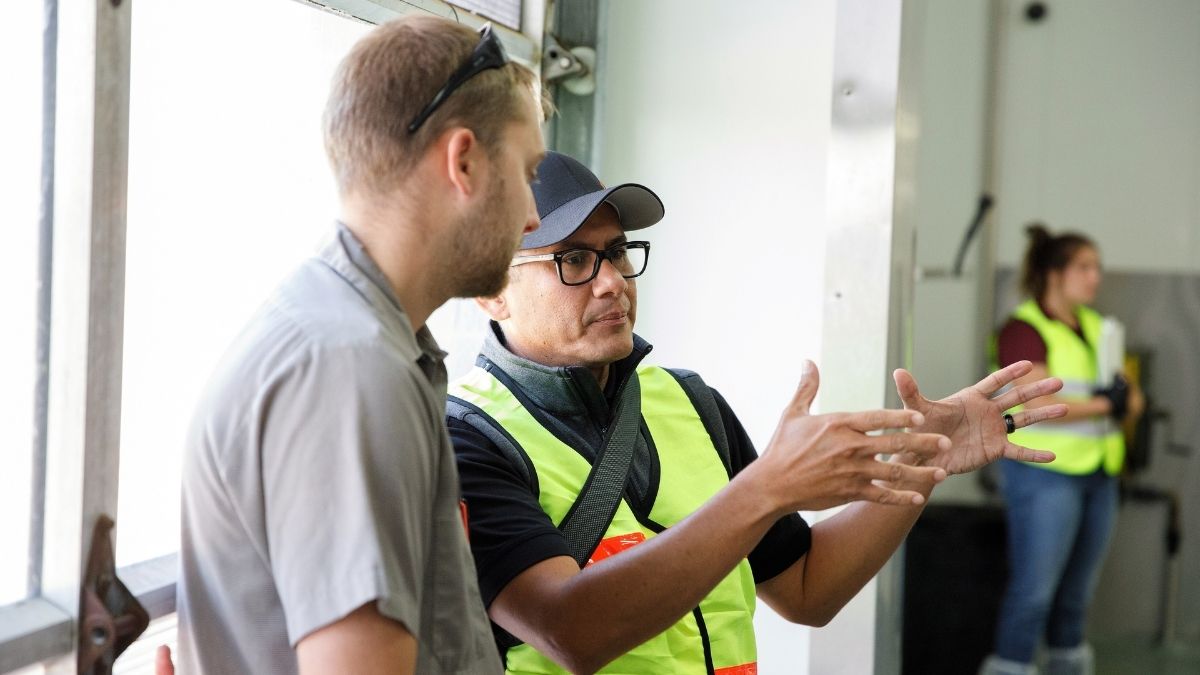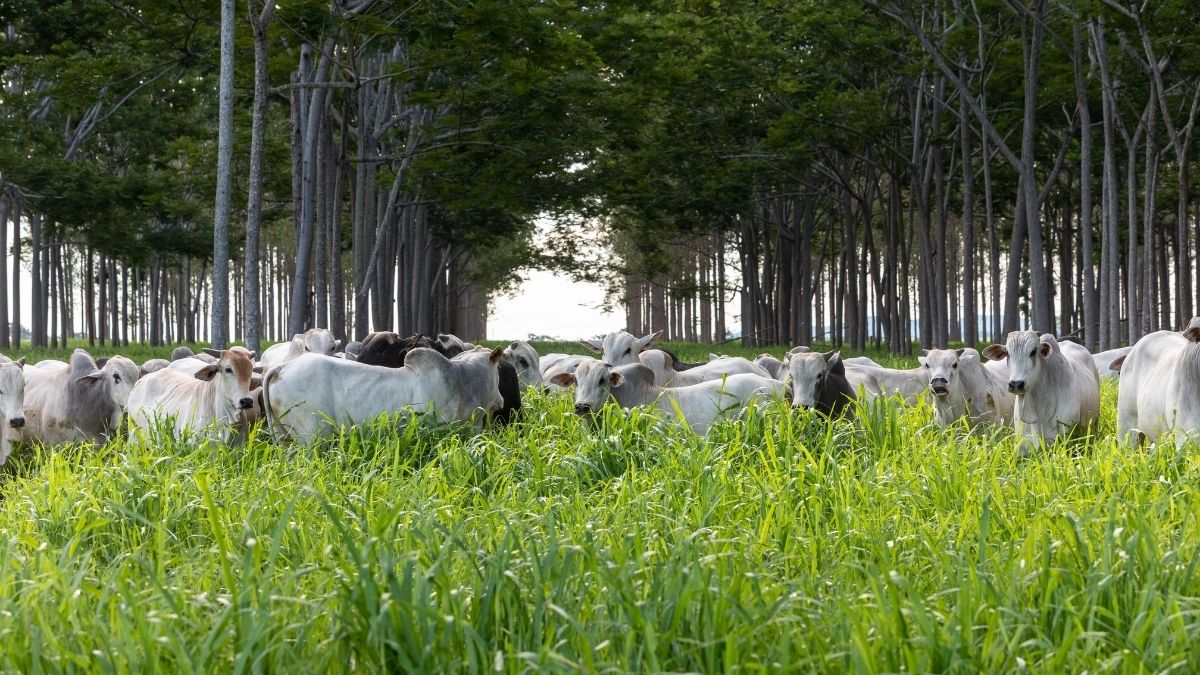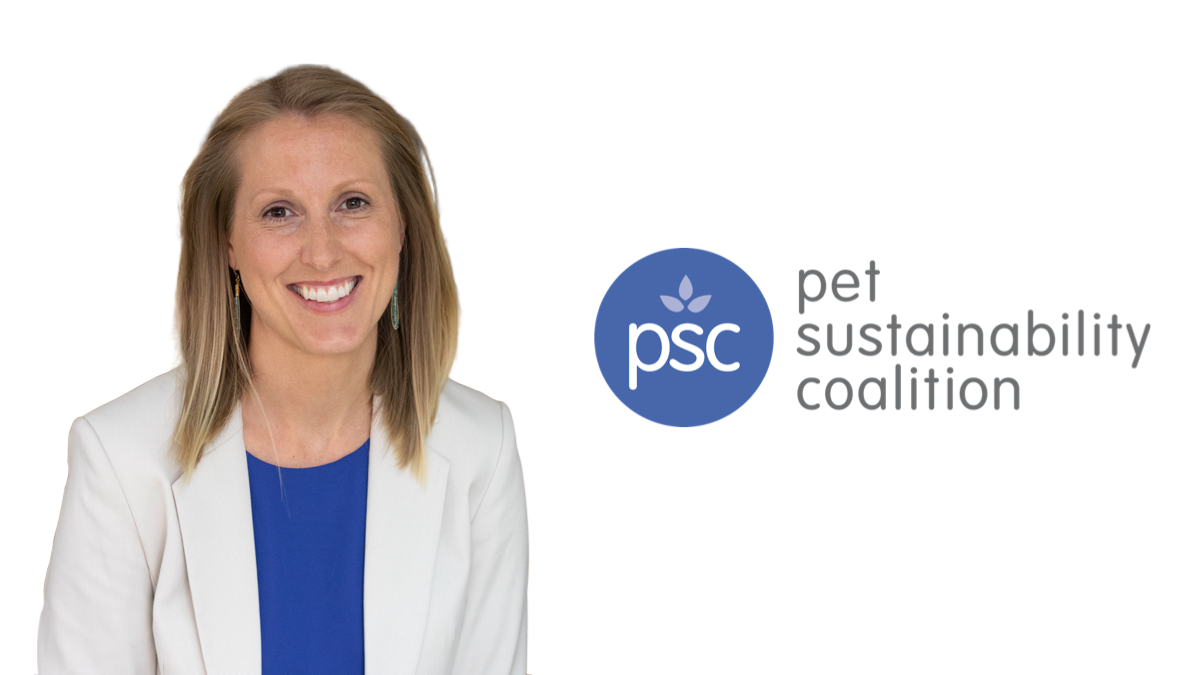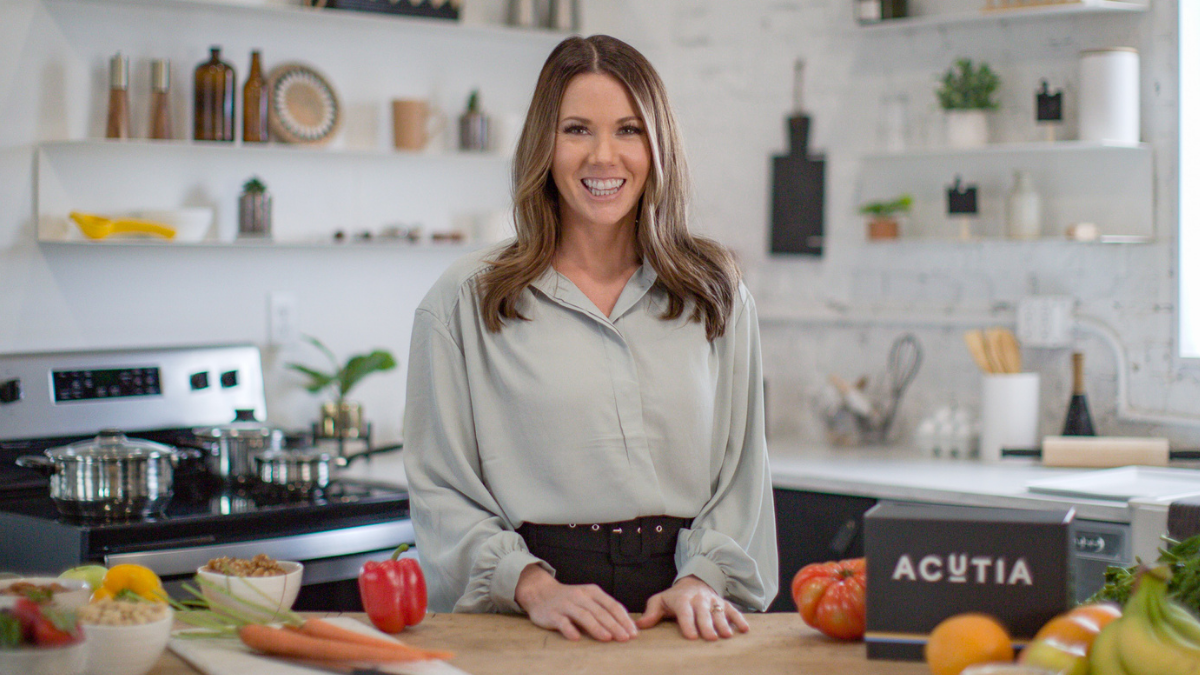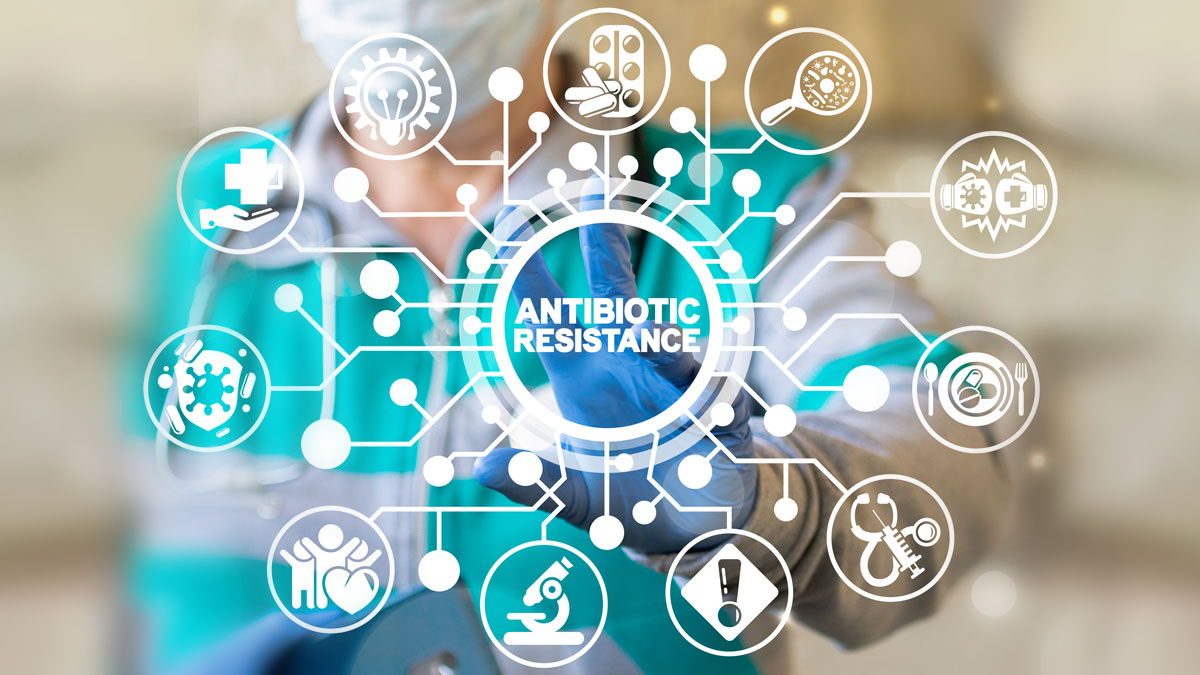Neurogastronomy: How our brains taste food
The science of how we perceive and taste food is an emerging field of study with powerful implications. Dr. Dan Han, Psy.D., CELM, FANA, chief of the division of neuropsychology at the University of Kentucky College of Medicine, is among the healthcare professionals uniting with agriculture experts, chefs and scientists to explore fascinating brain-behavior relationships through neurogastronomy. Dr. Han joins the Ag Future podcast to share how this groundbreaking science could influence quality of life and support global food security.
The following is an edited transcript of the Ag Future podcast episode with Dr. Dan Han, Psy.D., CELM, FANA hosted by Tom Martin. Click below to hear the full audio or listen to the episode on Apple Podcasts, Spotify or Google Podcasts.
Tom: Welcome to Ag Future, presented by Alltech. Join us from the 2022 Alltech ONE Conference as we explore our opportunities within agri-food, business and beyond.
With more than 40 million Americans currently suffering from food insecurity, and with an estimated nine billion people to feed around the globe by 2050, we need deliverable answers to questions of hunger, and we need them now. How can the science of neurogastronomy, the relatively new science of how our brains taste food, move us toward a goal of global food security?
I'm Tom Martin for the Alltech Ag Future podcast, and with me is Dr. Dan Han, chief of the Division of Neuropsychology at the University of Kentucky College of Medicine. Dr. Han is a fellow of the American Neurological Association (and) a co-founder and past president of the International Society of Neurogastronomy at UK. He has received federal and state funding and foundation grants in support of clinical trials of studies on brain behavior relationships, curriculum development and program development.
Dr. Han's work in translational neuroscience has been featured in Newsweek, National Geographic, The Wall Street Journal, on the BBC and CBC, (in) the Atlantic, HuffPost, Business Insider, New Scientist, STAT, Brain World, Alive Magazine, the ASCO Post, and the American Psychological Association's Monitor on Psychology. Welcome, Dr. Han.
Dan: Thank you. Thank you for having me.
Tom: The fact that our experiences with food are related to neurology hadn't occurred to me before, but it seems to make a great deal of sense when you think about it, and you wonder why we didn't think about it much earlier. But the term neurogastronomy didn't appear until it was coined by Dr. Gordon Shepherd, I believe, of Yale. He was first writing about the concept in the journal Nature in 2006. Why did it not become a focus of formal scientific inquiry until so very recently?
Dan: Oh, good question. The concepts and mechanisms and foundations were there for decades, if not centuries, actually. The movement to translate what we know in the context of neurosciences, individual perception, psychology, how that shapes an individual desire for food consumption and what that means for macro-level agricultural technology, consumerism and so on — as a movement, it hasn't been conceptualized until relatively recently, about 2015 or so. Dr. Gordon Shepherd at Yale conceptualized the term and coined the term and published it in Nature years back. The challenge was set for the scientists and clinicians and other academics by Dr. Gordon Shepherd to come out of the silos and actually talk to each other, educate each other, and have larger optics to look at some tangible questions that are needing to be asked and answered relatively quickly, because we have nine to ten billion people to feed by 2050.
Tom: The International Society of Neurogastronomy, which you have served as president of, is based at the University of Kentucky. Why UK?
Dan: The concept was born out of Yale University, but there were many academic clinicians and bench scientists at the University of Kentucky who, out of serendipity, decided to form a group and answer that call. The story actually goes back to 2012 when the book first came out. Dr. Gordon Shepherd, who coined the term, wrote the book called “Neurogastronomy,” and it was published in 2012, which happen to be the year when I was in Montreal for a neuroscience conference. The story is actually quite interesting. I'll get into it as a lay topic.
Gina Mullin, who was working with me at the time at UK Healthcare, she was my staff support, and we worked together on getting flights and so on. She was in charge of making sure that my conference travel itinerary was set in place at the time, and the server went down. I'm not terribly computer-savvy, so I was trying to pick her brain and trying to set up the hotel and flight, et cetera. I also asked around among my foodies in town. I asked them, “I'll be in Montreal for a few days. What is the restaurant to go visit?” Everybody told me to go visit Joe Beef in Montreal. That's where the chefs hang out. That same year, Anthony Bourdain did a special on the Travel network and featured Joe Beef as the restaurant to go visit when you're in Montreal. So, we figured, “All right, let’s go ahead and put that on the calendar.”
Gina Mullin helped me put that on the calendar, but at that time, the server went down. Internet got cut off and we didn't know if the reservation took. We were in Montreal. We figured, all right, let's just go and see if the reservation took. We went to Joe Beef. Of course, the reservation didn't take. Murphy's Law, right? I was there with some of my academic colleagues. We were there for a neuroscience conference. We figured, “Well, how often do we come to Montreal and visit a restaurant like Joe Beef?” So, we waited, and then we got sat late, about 9:30 p.m., I believe. But because of that serendipity, we ate late, and then things were starting to wind down in the restaurant. That's when Fred Morin — enter Fred Morin, chef extraordinaire and world-renowned chef — decided to come out of the kitchen with a bottle of wine in his hand and decided to make the rounds, saying hello to the patrons.
He saw us at the corner, and he immediately said, “Well, obviously, you guys are not from around here,” because we have lanyards and everything. We looked like dorks. We said, “Yeah, we're here for a neuroscience conference.” He invites himself down and actually brings out additional wine and champagne and some hors d'oeuvres on the house. He said, “I just read this book called ‘Neurogastronomy’. I'd love to pick your brain, since you guys are neuroscientists.” He sat down, and lo and behold, it turned out he was a bioengineer by training before he got into culinary arts. We started sparking up a conversation. Thanks to being lubricated with wine, he said, “Doc, if you could get some scientists, legitimate scientists and doctors together, I could get chefs, sommeliers, distillers of that ilk, and then we should have a meeting of the minds,”
because that's what Gordon Shepherd in the book actually called for.
That was quite intriguing to me. I said, “Of course, yes, let's do it.” But I didn't really think too much about it. I thought it was just one of those dinner conversations. I came back to Kentucky, and then I didn't really think too much about it. It was a cool enough story that I decided talking to my other colleagues. Brett Smith, who's no longer at University of Kentucky, but he was the former chair of the department of neuroscience, I told him about what had happened in Montreal. He said, “Well, Tim McClintock, who's a physiologist, a smell physiologist and a nationally renowned scientist who's at the University of Kentucky, actually did his fellowship training at Yale,” and there was Gordon.
Tim McClintock and I met and sat down and started having our discussions. And then I told him about what had happened in Montreal. He immediately said, “Okay. Well, let's call Gordon Shepherd.” The next thing you know, Dr. Gordon Shepherd not only gave us his blessing; he volunteered generously to mentor the whole process, to initiate a movement, an international society. For your audience, Dr. Gordon Shepherd is an internationally renowned neuroscientist, a living legend with nine seminal textbooks in the field. So, it was an honor for us to really take up the mantle and answer the challenge, but it's written in history. The University of Kentucky is where the movement was birthed, with all these different scientists, chefs, culinary artists, food technologists and agricultural scientists coming together out of their silos to ask the right questions and try to come up with an answer for global health, hunger and feeding ten billion people by 2050.
Tom: Sometimes, messed up reservations can lead to big things, can't they?
Dan: Yes.
Tom: Well, let's get down into the science here for our audience. I'm wondering what factors, such as dimming lights or adjusting music or even saying grace at dinner, can influence our perceptions of food and help us digest food even better.
Dan: Flavor perception is a truly multidimensional experience. It's just something that we don't think about because it's one of the most complicated sensory processing mechanisms that we know of — in fact, because the evolutionary process has dictated that you don't have to waste too (many) calories in your thinking process to how all this works every time you eat. Otherwise, we'll be burning off the calories that we'll be consuming. It's incredibly complicated, but seldom do we actually pause and think about the mechanism (of) smell, taste, flavor. Smell and taste constitute flavor, but the entire experience also draws from sight and other senses, like texture, sound. They all connect to your long-term stored memory and reward circuits of the brain and so on. There are aspects of anticipation before you actually bite into your first piece of steak and so on.
All of that has been studied in independent silos for a long time. Industry has done a marvelous job actually looking at what creates the perfect crisp for a potato chip or what lighting or what decibel makes the perfect ambiance for umami flavors, for a steak dinner with red wine and so on. But what we're trying to do is to identify all those variables and come up with ways to — I don't want to say manipulate them, but actually modulate them and use them so that we're not just merely using them for consumerism but to expand that concept to modulate the brain to want to eat and then desire flavors that come from smaller-carbon-footprint ingredients and create that demand for the masses so that we could actually have an efficient way of delivering food and nutrients for, again, ten billion people.
Tom: Okay. There's a lot to unpack in that response, and I want to get to the latter part of it soon. But first, just to focus on one of these elements, there have been several studies that have shown that perceptions of sweet and salty can be skewed by noise, by sound. Any idea how sound can affect our sense of taste?
Dan: Yes. Let me give you the macro version first. There's a phenomenon called the synesthetic experience, and we all have it. If I show you a picture of red jagged edges, you're more likely to call that “kiki” than “mubu”. Again, the words “kiki” and “mubu” are just made-up words. They hold no intrinsic meaning behind them, but your brain is already wired — and this is cross-cultural. We could do this in Asia. We could do this in Africa. We could do this in Europe. We could do this anywhere. Your brain is already wired to draw from the references that are already networked in and from memory, even before you had your own frame of reference, just what the species have actually packed into our evolution.
So, when you're thinking something jagged, we're drawing from the library in the brain that is associated with something a little more sharp as a consonant and so on, and then with something more like a cloud-like, fluffy visual. Your brain is drawing from more smooth-sounding vowels and so on. Imagine for a moment how complicated that network is, and we just take it for granted, and we don't think about it. Now, that same principle applies to other senses. Sound, decibel — depending on what kind of sound it is and so on — that's going to actually draw from the referential library in your brain and affect other senses, including smell and taste.
Tom: Finally, there is a science behind why my wife loves coconut but I don't. It's not about taste for me. It's the texture. Coconut is coconut, yet we have these completely differing perceptions of it. How come?
Dan: Yes, that's what makes the field quite exciting, because everybody has their own unique, subjective referential library in the brain, and that can be influenced and modulated by your own personal experience. On one extreme end of the spectrum, you have taste aversions. You could have something that you enjoy quite a bit, but if you have too much of it, you will get sick of it. That will be your personal and unique subjective experience that's going to have a lasting change documented in your brain's library.
Afterwards, it could be coconut for you, or it could be pork and beans for others and so on. The next thing you know, your brain is wired to create aversive reactions for that stimulus, even in the future. For me, it's pork and beans. If I smell it 20 yards away, it'll start a feeling in my stomach. The funny part of that is that that occurred after (something happened). When I was a preteen, I used to very much enjoy pork and beans, and then I had a gallon of it by myself. I got sick and threw up. There was the referential library deposit, if I may, that was the impetus for this taste aversion for the rest of my life.
Tom: Well, I had pneumonia as a child, and I loved pickles up until then, but for some reason, the illness made me have an aversion to pickles, and that lasted for years. I finally overcame it after later years as an adult. Is that common?
Dan: Yes. It's actually quite, quite common, and it has nothing to do with pickles. It could be any kind of food. These taste aversions can occur as the experience is correlated in your brain with something that you used to enjoy. The next thing you know, your brain has this referential library of that entire experience being something awful. Now, fortunately, they can also go extinct, meaning after some time passes and that matching reference is not continuously reinforced over time, then your brain does become more forgiving to the stimulus. So, if you haven't had an aversive reaction to pickles and haven't had pneumonia for some time, you could ease your way back into some artisanal pickles a little bit at a time and then enjoy the experience again, especially if you reinforce it with positive experiences.
Tom: Right. How can the principles of neurogastronomy guide the design of experiences that encourage us to eat more fruits and vegetables, for example, and fewer high-sugar, high-sodium foods?
Dan: Well, that's a very complicated question, because not all fruits and vegetables are actually good for you. There's a lot to unpack there. The principle of neurogastronomy really matches all other principles of biological sciences: everything in moderation. There's a Goldilocks zone for all of this. There's a way to maintain homeostasis for any biological entities. Too much of anything is actually no good for you, especially when it's at the expense of other balanced, nutritious diet intake, and too little of anything is not good for you.
Now, in North American culture, (the) culture, over the years, has driven to excess of certain types of ingredients. For example, if there is a consumer demand for sugar, then agriculture technology is going to meet that demand by providing sugar. It's a very, very simple economic principle. But what we're trying to do is come up with modulating effects for the brain so that the brain desires just the right amount of sugar but also desires other ingredients that are healthy and with smaller carbon footprints.
Once that desire is set at the individual level, then (the) market will just follow. Big ag and agricultural technology and food technology will just follow that trend and that demand. To your initial question about how do we get people to eat more fruits and veggies, well, there are a lot of tricks of the trade to foster that and then promote that. But I'll throw back this question to that question, which is, why are we not thinking about coming up with ways to actually permanently change the habits of the individual so that we don't have to ask those questions? That's the principle behind neurogastronomy.
Tom: Okay. Bringing it around to the subject of hunger and global food security, I'm going to begin this part of our conversation in kind of a novel way, but it's something that's come up during our conversations here at the Alltech ONE Conference. There's this emerging industry in farming certain types of insects as a potentially important source of protein supplements for human food. We humans, however, tend to almost universally loathe the very idea of eating bugs. These would be ground into a powder. They'd be mixed in with some sort of more widely acceptable Trojan horse, let's say, to get beyond that aversion. But in following up on what you just said, can we trick our brains into enjoying a food that we have not liked? How can neurogastronomy play a role in making insect meal acceptable to humans as a source of nutrition?
Dan: Excellent question. I'll start off by saying that one of the assumed variables behind that question is wrong: (that) humans do not eat bugs by design to begin with. It's very culture-specific. You can go to other parts of the world, and eating bugs is just a base rate. It's a baseline phenomenon. It's not thought of as an alternative source of fuel that you just make do (with). Rather, it's something that is actually sought out.
Now, I'll actually pose this as a question to derive at the answer. I love cheese. I'm a sucker for cheese. Give me gouda, some brie, what have you — I'm a sucker for all sorts of cheese. My wife is not. Now, if you take the umami, the savory, salty, addictive flavor out of the referential library that I talked about from your brain, if you just purely logically think about what cheese really is, it's pretty gross actually, if you think about it. Nobody thinks about it in Western culture as an example, because it's something that we've been saturated with. You don't think about the process. You don't think about the mechanism. You don't question it. You taste it and then realize, “I like the savory experience.” Then you get to a point where you crave for it.
Let me actually provide a reason behind that before we even unpack this. If we could get an entire culture for hundreds of years, if not thousands, to not ask the question about the entire process of making cheese, which is taking lactation from a different species and making sure it rots and then, later, trying to see if you could salvage it by eating it — (if) we could have an entire part of the species not questioning that and actually craving that process, you could do the exact same for bugs.
Tom: You always want to ask, “What is wrong with us?”
Dan: Right.
Tom: First of all, mea culpa, I think I am guilty here of a little bit of parochialism and assuming that this aversion to insects was universal. It's probably more of a Western cultural phenomenon.
Dan: Yes, even anecdotally — I don't even have to provide other cultural references. I could tell you anecdotally, growing up in South Korea, eating roasted grasshoppers was a very common thing. If you like nuts, you'll actually very much enjoy roasted grasshoppers. It's a very, very sustainable, rich, nutrition-packed source of protein. There's really no reason why we should shy away from this alternative fuel source that can be a culinary delight.
Tom: Most of the talk about food shortages revolves around population growth on that part of the equation, but how can the science of neurogastronomy play a role in moving the world toward greater food security in the years to come?
Dan: (The) food shortage and population growth ratio, when the average person conceptualizes the problem, so to say, it's based on a misunderstanding of the data spread. That ratio is off, so the balance is off. It's not so much that we have too many people. We have plenty of people, yes, and we're going to have more, but there are also plenty of nutritional sources that (are) available as is. It's just that that balance is off right now because certain cultures have higher demand for certain specific ingredients. Again, simple economics, supply is always going to follow the demand. Again, we have to re-ask the question before we identify the problem.
What is the problem? Well, is it truly that we have too many people and growth in the species and not enough food for them? Data actually suggests otherwise. It's the imbalance of what we desire and what is available for producing crops and so on. So, the question has to be reframed to ask, well, how do we actually regain the balance? I think, by coming out of everybody's silos and crossing the aisles, so to say, and then learning from each other and getting better optics and a bird's-eye view of what we didn't know could really help all these different fields of sciences come together and come up with an innovative solution, which is what neurogastronomists are doing.
We have bench scientists who are working from labs, and then we have clinicians like myself who are seeing patients for different sorts of disease. Mine happens to be in the brain disease arena, and then agriculture and food technology scientists in their respective labs and, of course, culinary artists to put all the variables together and actually be able to deliver it to the masses. Because if I prescribe it, then it's a prescription. Nobody's going to follow my regimen. If a lab scientist writes it down, then people are going to fall asleep before they decide to incorporate it into their eating habits. So, we also need the artists to really teach us how to deliver it so that the average person could look at the meal and the concept and the construct and say, “Oh, I want to eat that.”
Tom: We just have a little bit of time left, but this is really important, and you've touched on it earlier. Can this science, this neurogastronomy, help create the desire for ingredients with relatively small carbon footprints and thereby impact both global hunger and climate change?
Dan: That's our goal. That was specifically posed as a query and a challenge by Gordon Shepherd himself. Well, the fundamentals of basic economy dictate where science and where food and where agriculture go. Again, the principle is predicated on the fact that supply is always going to follow demand. Right now, humanity has created an imbalance in that structure, so the domino effect also occurs. That imbalance has created a monoculture of crop sciences, which is not the fault of the crop scientists at all. They're just following where the demand is. It's not a blame game, but it's the starting point for this imbalance. It really starts with the individual's desires.
Now, you can't blame humanity for that either, because that's baked into our genes. We can't just unbecome who we are. So, how do we come up with an innovative way to have our cake and eat it, too, for creating a Planet of Plenty? The presuppositions behind those statements are the following: We do have plenty. How do we make people understand that the power is in the individual to actually access that plenty? How do we do that psychologically? How do we do that physiologically and neurobiologically with our genetic memory and so on? That's a tall order.
Now, where does climate science come in? One could argue that the seven-plus billion people that we have in the planet right now and the domino effect that caused post-industrialization has caused an environmental change that is harmful for our species. I actually dare to say that climate change is not what the average person thinks of as is. Climate has changed, yes. Life will still continue. It's just bad for our species. We have created a climate that is bad for us. Jellyfish are doing great right now. They're actually proliferating more than ever. There's a pretty significant problem that is being posed in sailing and marine life, because there's too many jellyfish now.
Life will go on. It's just we created this imbalance for ourselves because our demand for certain ingredients have been met. Again, how do we undo that and recreate that balance? I think our colleagues would agree with me that by coming out of each (of our) fields or silos and getting better optics, we can actually address the individual desire at the micro level and then create a demand for a crop science supply chain that has the least amount of problematic impact creating high-carbon byproducts and then reverse that process and then have multiple ways to actually address carbon in the air.
Tom: Well, I think this conversation has “to be continued” written all over it because, obviously, the research is underway and the answers are profound for all of us. So, if we may revisit (this topic) sometime down the road, I'd appreciate it.
Dan: Yes. Thank you for having me. This is a very passionate topic for me. I think the gravity of the importance of what we're trying to achieve here for global health and to establish a Planet of Plenty is just an exciting venture, but beyond this excitement, it's —
Tom: It's profound.
Dan: Yes, it is. It is.
Tom: Dr. Dan Han, chief of the Division of Neuropsychology at the University of Kentucky College of Medicine. Thank you so much.
Dan: Thank you very much.
Tom: For the Alltech Ag Future podcast, I'm Tom Martin. Thank you for joining us. Be sure to subscribe to Ag Future wherever you listen to podcasts.
- Read more about Neurogastronomy: How our brains taste food
- Log in to post comments
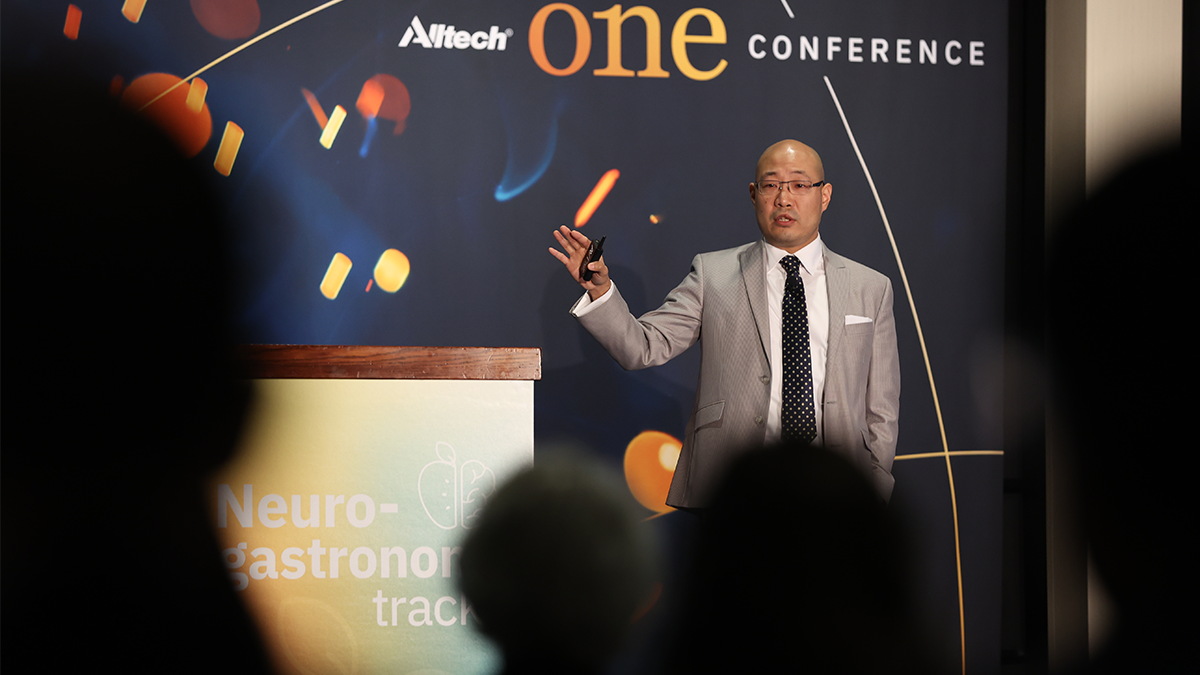
The emerging study of neurogastronomy is uniting the healthcare, agriculture and culinary sectors to explore the science behind what we eat, how we eat and why we like what we eat. What they uncover could impact hunger, health and how we feed ten billion people by 2050.














